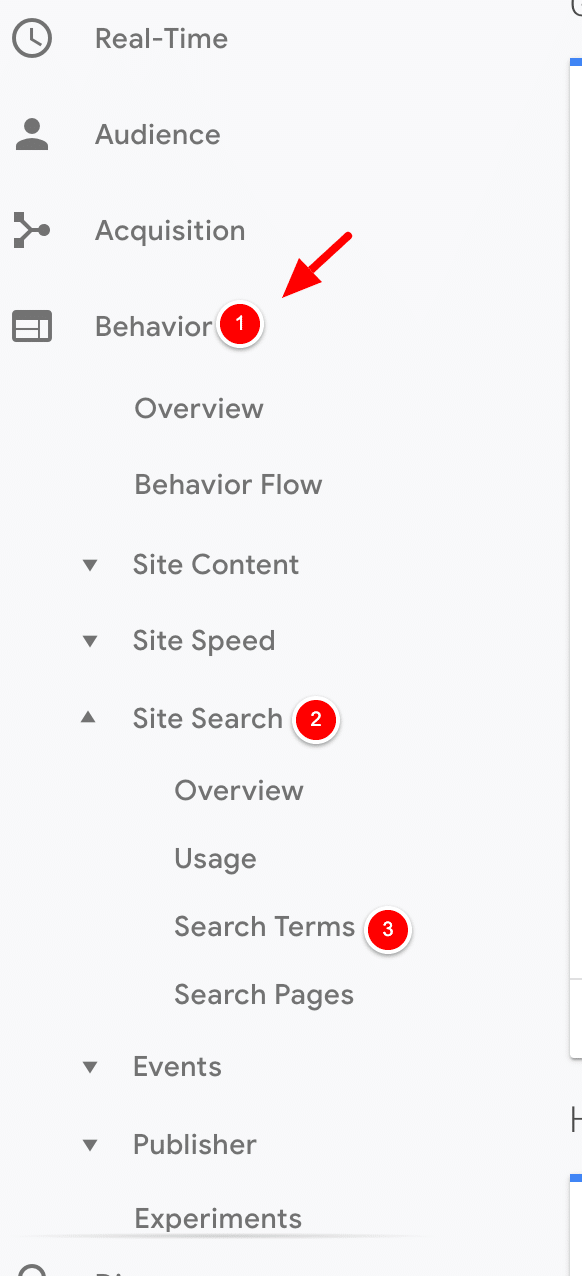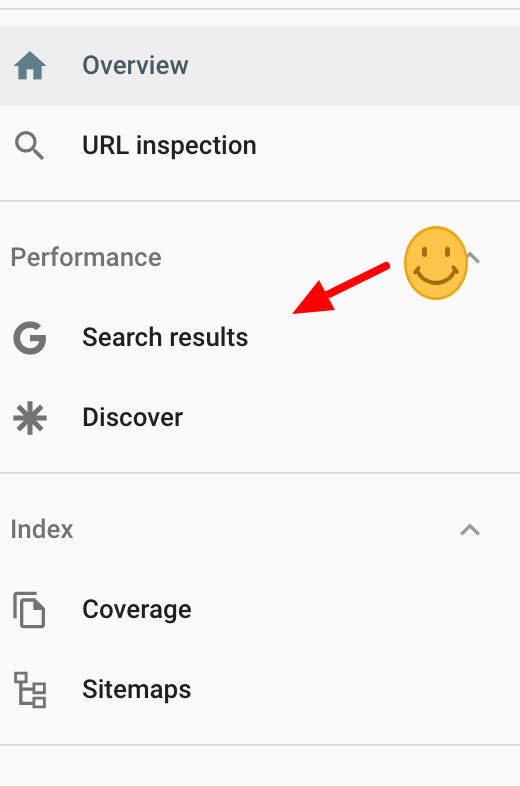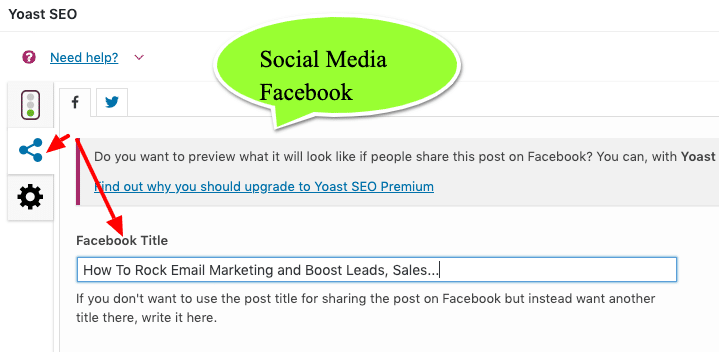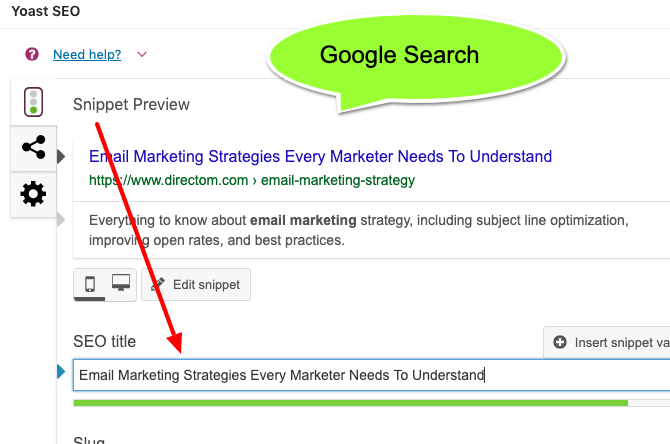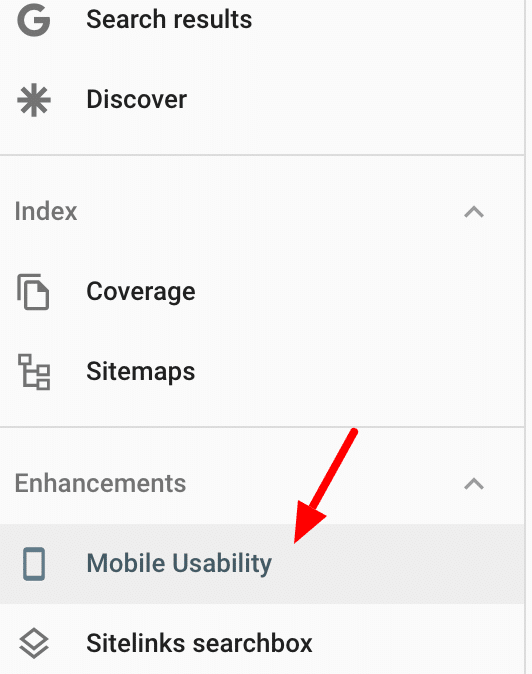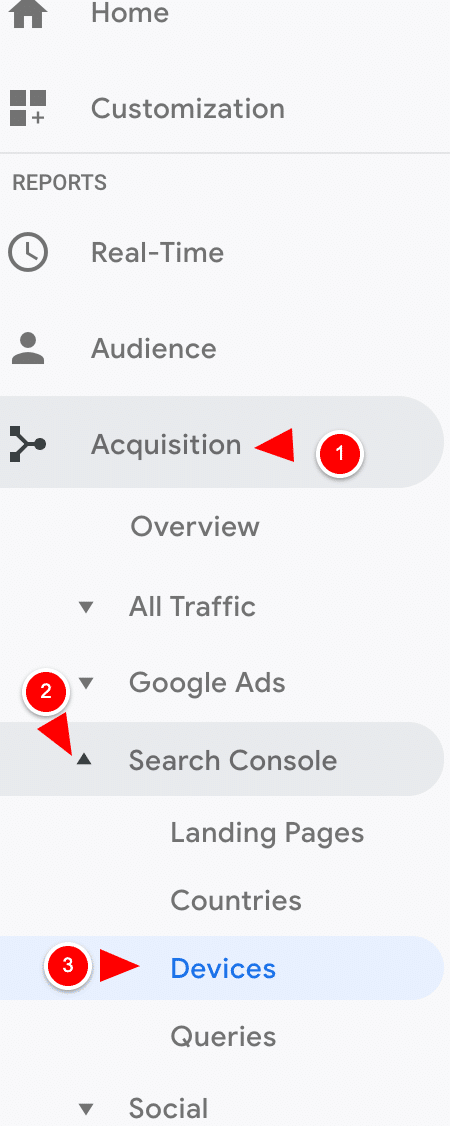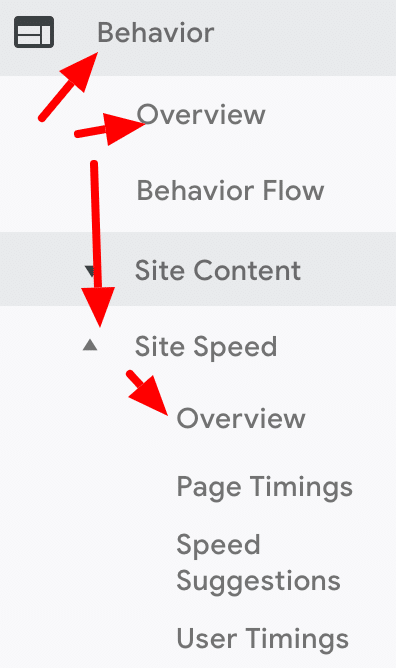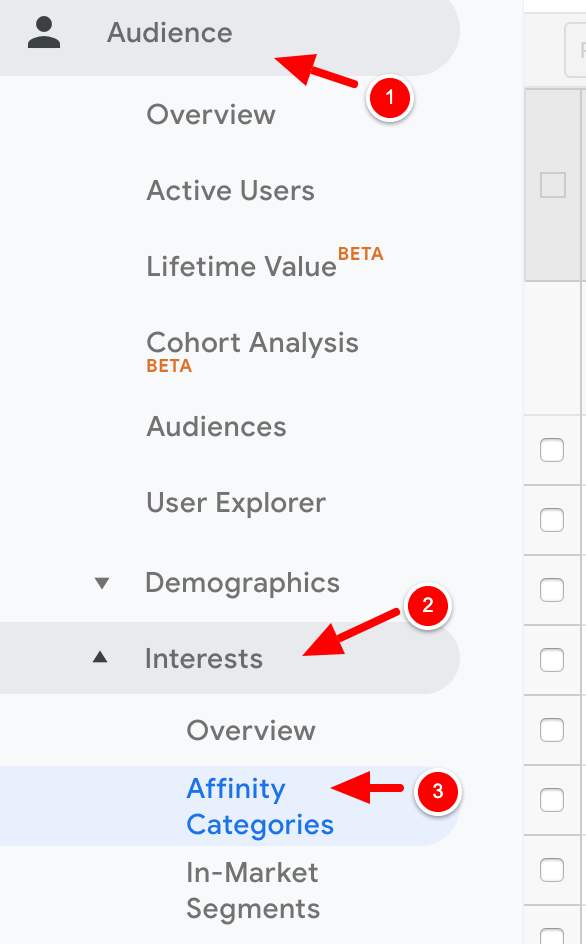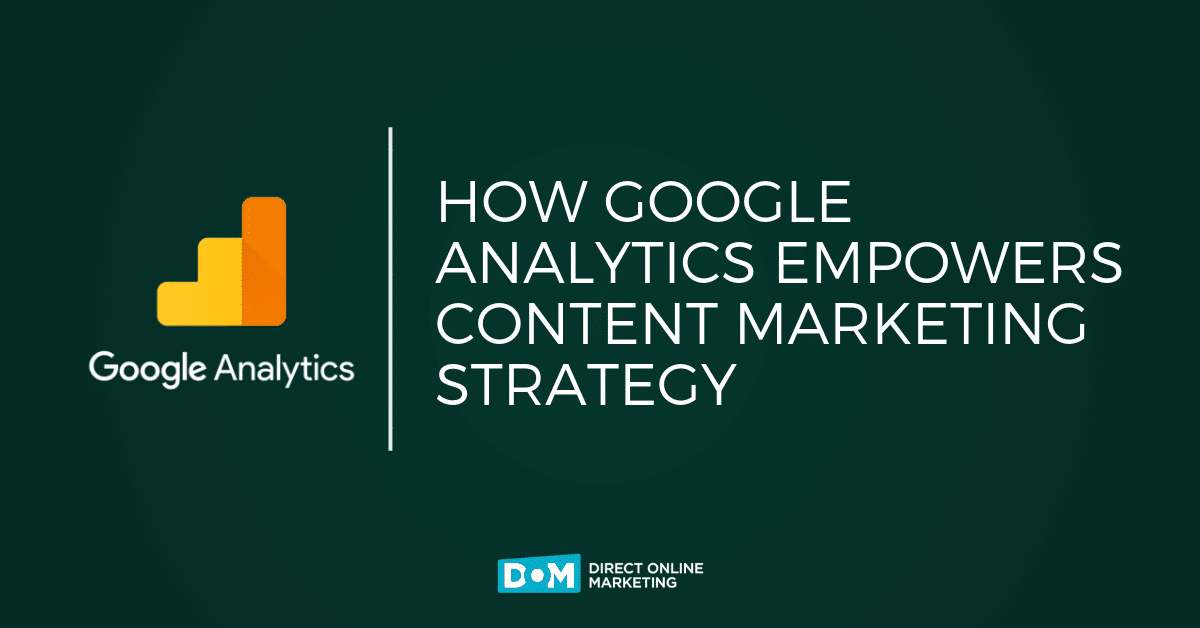
Editor’s Note: Looking for information on how you should be using Google Analytics to inform your content marketing efforts? Are you still using the traditional version of the platform – Universal Analytics? You are at risk of losing any of your historical performance data in 2023 if you don’t set up and properly configure Google Analytics 4. Learn how the two platforms compare to each other in this blog post – Google Analytics 4 vs Universal Analytics.
Why do you think we’re writing this article?
Your wheels are turning. What a confusing lead question.
Maybe you feel that we’re writing this because we understand the subject?
The above is somewhat true. But it isn’t the main reason we’re writing this article. And the fact that you don’t know why we’re writing this article means you’re on a lousy content marketing path.
So why are we writing this article? We’ll get to that – but first, let’s switch things up.
You’ve written the ultimate masterpiece blog. When you hit publish, you hear the sounds of fireworks and cheers. You’ve done it; you’ve changed the internet. Upon reading your helpful guide, digital marketers realize an advertising axiom has swerved off course.
But there is only one problem: you’ll never know if any of this is truth, fact, or just your narcissistic tendencies erupting like sweltering hot lava that’s been trapped under a Pacific island for centuries.
Why?
Because you don’t do data.
We wrote this article because, unlike you, we do do data. (hang tight, we’ve got a much better explanation further down in the article)
Maybe you think that you do do data.
Because you installed Google Analytics. You look at traffic numbers. You know your most popular blog articles. You once read a great article on bounce rates. You watched an online Google Analytics tutorial. So you’re an expert.
Eventually, a cold reality summons itself from the real world. Because what you think is great content doesn’t matter. What we think is great content doesn’t matter. We aren’t buying a sport coat, our opinion on things isn’t discovered through vanity. To figure out if what we wrote wins, we must leverage analytics. And that doesn’t mean simply monitoring user sessions. This means applying Google Analytics to content marketing strategy and setting our sails appropriately.
Why Google Analytics Fuels Content Marketing Strategy
If Google Analytics isn’t driving your content marketing agenda, that means emotion is driving it. Like a gambler perched at a blackjack table at Mandalay Bay, emotion will drive a wedge between you and your bank account eventually. The longer you sit, the less favorable your odds of keeping your winnings become.
Google Analytics helps us eliminate emotional decisions regarding our content marketing strategy.
Writing is an art form. When we produce art, we do so by way of emotion. So, we become attached to our work. That’s normal mental processing during a content production phase. This is why many writers fear editorial processing that results in criticism of their work.
There has never been a better time to refine your writing skills. The use of modern analytics programs allows us to glean real-time responses to our content. We no longer depend on our friend or brother-in-law to read our content and stroke our egos. We simply access Google Analytics do decipher what’s happening with the content we create.
We examine.
We digest.
We adjust our strategy.
That’s how you win the content game.
So how does Google Analytics improve your content marketing strategy?
- It tells you what content is working, which indicates what content you should create more of, which amounts to improving your content marketing strategy.
- It determines the effectiveness of past content marketing efforts.
- It reveals which content Google’s SEO algorithm rewards the most.
- It appraises the depth of readership: how long did people read? Which sections did they pass on or skip to?
- It actuates a viable content strategy.
Suddenly, you’re no longer a slave to emotion; instead, you’re a driver of content marketing revenue and lead capture.
But how do we leverage Google Analytics in a way that enhances and improves our content marketing?
We’re glad you asked.
How to Leverage Google Analytics for Superior Content Marketing Strategy
Every marketer wants different things. Some of us like pie while others crave gummy bears. The point is, one marketer’s content marketing goals might not be the same as another’s.
But most content marketing goals align rather well. That’s because methods of creating revenue from a website, while multi-dimensional, aren’t that various. Your content’s traffic source potential is limited in scope.
The point being, you need to put energy into all traffic sources.
Let’s start with search engine optimization.
A Powerful Combination: Using Google Analytics and Search Console to Improve Content Marketing
Remember earlier when we asked you why we wrote this article?
You didn’t know.
In simple terms, we wrote this article because Google tends to rank us high for articles about analytics. They do this because our Google Analytics articles bring value. Google’s search algorithm determines content value by using analytics (maybe not Google Analytics, but some sort of analytics). They want articles that get clicks and show competitive reading time (we’ll get to all of that).
For now, just know that Google signals to us, even if inadvertently, which of our content users enjoy. But more importantly, which content categories Google feels we excel at producing.
No, Google won’t write you a letter telling you what content to create. Instead, they use analytics to decide which content overall is most appropriate given specific searches. And we use their analytics to interpret our successes and failures.
Let’s break this down with a real example:
Using Google Search Console, we can see which search terms we rank for, get clicks and impressions for, and trend for. Google Search Console’s interface allows for the consumption of easily digestible data.
Our blog ranks competitively for many Google Analytics keywords. We can see this in our Search Console.
Why do we rank well for Google Analytics content?
Because it’s good. Because we have analytics superstar staff members creating gems such as:
The Best Google Tag Manager Recipes | Free Data Studio Report Templates | How To Track Users Across Subdomains
All of these articles rank well. They provide information that a marketer can take action on immediately. You can download data studio reports within seconds. This could change your data organization process overnight.
Google realizes that users can extract great benefit from these articles. Better yet, the articles are easy to read, and any marketer can understand how to take action.
These, too:
Why Is Your Direct Traffic in Google Analytics So High? | How To Be a Data Driven Decision Maker
Because DOM ranks well for keywords relating to Google Analytics, we produce more content around it.
We understand what content performs best by using Google Search Console. To complete the experience, we hook up Search Console to our Google Analytics account.
Now, when we log in to Google Analytics, we see more in-depth information on our keywords and traffic production.
To access search information, go to Behavior > Site Search > Search Terms:
In Google Search Console, you will need to sign up here. Then verify your site with Google. Once that’s accomplished, login to Search Console and click here.
Now, we understand where to find our keyword rankings in both Google Analytics and Google Search Console.
So we should only look for content that Google likes, right?
Not so fast.
Should You Only Create Content That Google Search Appreciates?
Your keyword rankings are one part of a data-driven environment. Google search rankings aren’t perfect. The algorithm can miss great content, and it can also rank terrible content. Which is why Google frequently refines and modernizes its algorithm.
That said, building a content strategy around data extracted from Google’s ranking tools is a sound strategy. It doesn’t mean you can’t create other types of content. We have some great pay per click and search engine optimization solutions included in our digital marketing services.
Data serves to guide us, not restrict us. It enables us to evolve; it shouldn’t hamstring our efforts.
Social Media…About That…
We explained that Google organic rankings help us understand what content is good, what content is bad, and what content is so-so.
But many content marketers drastically underestimate how different social media and search are.
It’s not just that Facebook and Google Search are different platforms; it’s also that people use each much differently.
Because of this, content marketers need to create unique titles for each platform. In some cases, the Google Search title can be the same as the social media title. But not always. Marketers need to examine this with each piece of content they produce.
Let me show you how we view headline/title creation:
This is our email marketing guide. Inside, you’ll find information on email newsletter headline creation. You don’t need that NOW, but at some point, you need to understand how to craft awesome headlines. Instead, let’s examine how we leverage SEO Yoast to appropriate headlines for my newsletter article.
Notice anything peculiar?
All of these titles are unique.
So, why do we do that?
The first title is the on-page title that shows up when you click the article. We want that article to be too the point. While we don’t want to deploy a boring headline, it’s important to account for the fact that the person clicked already. We’re not encouraging a click, we’re validating they found the right article to serve their needs.
The second title is for social media, mainly Facebook and Twitter. Social headlines need to be a little more aggressive to get clicks. Remember, Facebook and Twitter favors content that garners engagement. People scroll and you have a mere second to encourage them to give your article a shot.
That means we want my social headline shorter. We want it to be juicier. Those are two attributes we don’t want our SEO title to always possess. But if we don’t divide headlines, we choose one over the other.
The third title is our SEO title. It’s straightforward but we loaded the powerful keywords in the beginning. On the social title, keywords are less of a concern.
This article isn’t about headline crafting. You’ll need to do your research and test your site to determine what’s best for you. The point is that you need to make sure your articles use services like Yoast to divide up titles for specific purposes. And if your site isn’t built on WordPress, some social platforms allow for creating custom titles. Doing so influences clicks. If your article’s headline fails to achieve clicks in the SERPs, or on social media, your article dies.
Bounce Rate…Eh…Time On Site: Why They Love Us, Why They Hate Us
Wouldn’t it be great to see if people start reading our articles and then abruptly leave? It would reveal a pretty big problem. When readers make it past the intro, this tells us that we bore our audience. Or it tells us the user feels mislead by the headline (either on Facebook, or in search results, or on the article). It could say to us that people are finding our article from a website that is misleading them.
Time On Site (TOS) gauges readership health. When TOS is low, it signals that our content might not be up to snuff.
There are exceptions:
- The content is purposely short. Our free data studio article (linked above) is short. But it’s incredibly useful. So the TOS can be low in such a case.
- Maybe someone linked to your article under misleading terms. If someone links “learn more about consumer hammers” to your article about email marketing, people are going to abandon.
Strange linking happens, typically by accident. You can contact the site owner to help resolve such matters.
However, when TOS is low beyond the above two examples, that’s a red flag. It means you need to examine the content.
Is the intro engaging?
Is it interesting?
Does it hook the reader?
Is the article broken up into relevant sub-headers?
People need to be engaged immediately. They also need to find what they are looking for quickly. If you fail at those, people bounce.
Some people confuse bounce rate and TOS. Bounce rate implies that someone clicked on your content and then clicked to another site. In other words, they only viewed one piece of your content. A bounce rate can happen after someone read your 11,000-word article for 19 minutes. That’s a good thing.
For content marketing, TOS is the imperative metric to interpret readership. Bounce rate can be meaningful. But you need to understand its practical use. Here’s our bounce rate guide, have a read (later please, things are just now getting good).
How’s Your Mobile Experience?
Your masterpiece is complete. You’ve hit the WordPress PUBLISH button without a drip of sweat. You know you’ve got a winner.
But alas, it all falls apart. The TOS lags. It doesn’t rank on Google. Facebook stopped showing it in your fan’s feeds.
You’ve pulled the article up on your beautiful MacBook Pro at least 25 times. You’ve reread and reread. It makes no sense.
It’s all a bust. You suck at content marketing. You start looking for jobs at gas stations.
WAIT.
Let’s slow down.
Did you happen to check your iPhone? What about your friend’s Android?
If you don’t optimize your articles for mobile, your articles stand no chance of success on any platform.
So what’s first? View a grip of your articles on mobile devices. How do they load? Are they readable or is there some sort of weird alignment that distracts from the content?
Let’s run a basic organic mobile health check.
First, login to Search Console.
Click “Search Results” (we were here earlier).
Then click “Devices.”
Most of your clicks should come from mobile (not always, but mostly). You are looking to make sure you are getting clicks.
You also want to make sure you aren’t getting any mobile usability alerts.
Next, slide down to where it says “Mobile Usability.” Click it.
Do you see errors? If so, see if you can fix them. If not, congrats, so far things are looking good.
Next, swing by our old friend Google Analytics. Now do Acquisition > Search Console > Devices.
If you haven’t hooked up your Google Webmaster Tools to Google Analytics, you’ll be asked to do so now. If you have, dive in and make sure your mobile stats are healthy.
You want to break things down by device, which your view will default to. If your TOS is low on Apple iPhone, but not Android devices, you know where the problem exists.
It’s possible that only certain versions of iOS may show issues with your content. Or tablet devices could make things funky. When it comes to content display issues, the world is your device oyster.
While discovering issues may feel overwhelming, it should be viewed as a good thing. Once you solve mobile usability issues for your content marketing, things can only get better.
Your Site Is Slow
Hi,
Meet mister friendly turtle.
How cute!
Few things on this earth are cuter than a turtle plopping across a beach. Except maybe a puppy playing in a plastic pool. Or babies eating baby food. Ok, there are cuter things, but turtles are pretty cute.
Until they aren’t.
Imagine if the turtle in the picture was carrying all the contents of your article from you to the person who clicked from Google.
What would that look like?
It would look like partially loaded page zones. It would feel like anguish. It would result in abandonment (remember TOS? Yeah, that would be junk again).
Slow response times are a plague to content marketers. You only have a few seconds (if that) to capture your reader. If a potential reader has to endure a big, underoptimized header image for 10 seconds, they’ll be gone.
You can test site speed using tools like Pingdom or Google Site Speed (the two free solutions we typically recommend here at DOM) or even a premium tool like GTMetrix. But one of the best ways to understand your site’s speed health is located in Google Analytics.
You can also use Page Timings and Speed Suggestions to help you diagnose and fix issues. You can determine if particular articles are slower than others. If so, you can fix those issues. Maybe an awesome article has something embedded near the top of it that’s slowing load times?
Most general speed issues are related to WordPress plugins and themes. Some are related to improperly set up servers.
Your site speed will never be perfect, but you can do the best you can to improve it by leveraging analytics.
Who’s Looking?
Wouldn’t it be great to get an idea of what type of visitors read your site’s articles?
We’ll spare you the metaphorical diatribe here. Instead, we’ll introduce Google Analytics Affinity Reports.
In Google Analytics, go to Behavior > Site Speed > Overview.
At this juncture, you’ll find a basic overview number of your site’s entire content library.
To access these reports in Google Analytics, go Audience > Interests > Affinity Categories:
To the right, you’ll see your users groups and categories.
How do you use affinity reports with content marketing?
Look at the major audiences reading your site. Can you develop content for them? Could you discover new content ideas?
Look at the audiences you perform poorly with. Do they have low TOS? If so, that might indicate that you shouldn’t produce that type of content. Again, no one stat should drive your entire content marketing strategy. But affinity reports may help reveal troubled waters that need further analytical dives.
Conclusion
Content marketers should use Google Analytics to determine content strategy and health. By avoiding deep-dive analytics, content marketers fly by the seat of their pants. In analytics, we often discover new content opportunities and shave time-waste.
We can learn more about our readers, what they like, and what they want, by using data. We can also become better content creators because Google Analytics helps us understand where we fall short and where we succeed in writing.
To get more information on this topic, contact us today for a free consultation or learn more about our status as a Google Premier Partner before you reach out.
